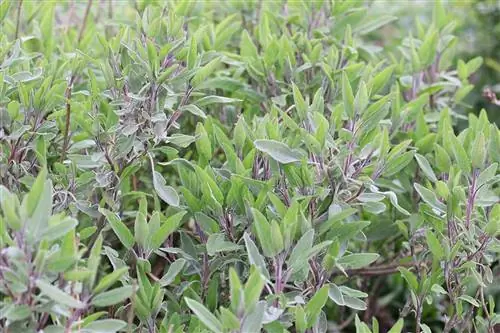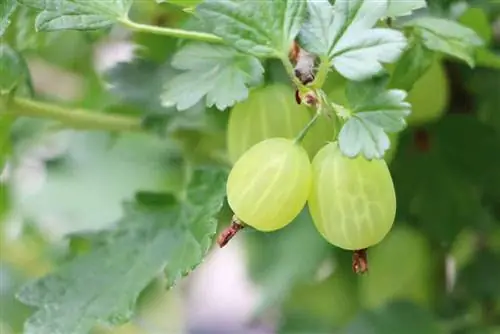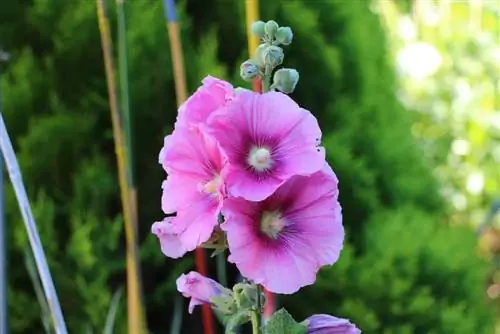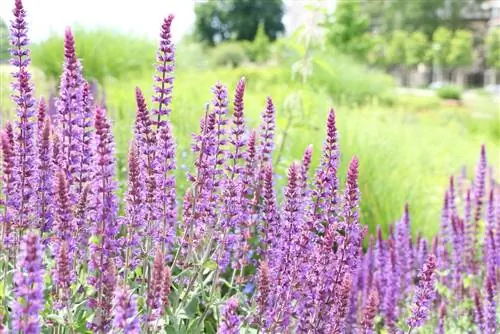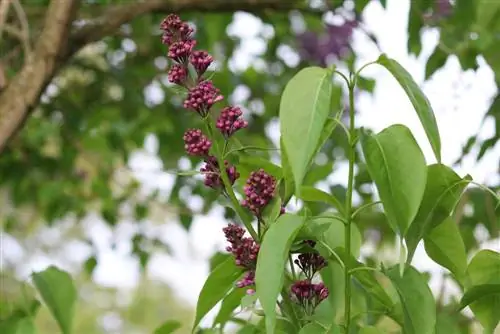- Author admin [email protected].
- Public 2023-12-17 03:39.
- Last modified 2025-06-01 06:48.
Pruning measures ensure that sage plants thrive and bloom profusely. Regular cuts are recommended for both crops and ornamental plants. However, there are slight differences depending on the species.
Choose the right time
When you should cut a Salvia species depends on the species. The widespread common sage (Salvia officinalis), which is used as a spice and medicinal herb in the kitchen, has its main vegetation period after the Ice Saints and into August. The plant becomes woody with age and requires pruning during the dormant phase. A number of related species such as steppe sage (Salvia nemorosa) remain herbaceous and enjoy pruning measures that are adapted to the respective growing point. These times are ideal for woody and herbaceous specimens:
- perennial species should be cut twice a year
- first cut in February or March
- second cut from July to August
- Cut back sub-shrubs in late winter between February and March
- radical pruning takes place before the new shoots
- Harvest cuts are recommended in July
Tip:
If self-propagation of the common sage is undesirable, it is recommended to remove the inflorescences in a timely manner. The ideal time for this pruning measure is in July.
Prepare tools
Which tool you choose for your cutting measures depends on various factors. Individual plants do not require electrical tools. Edit these copies conveniently and quickly by hand. If you have planted larger areas or need to cut woody shoots, additional utensils are helpful. These scissors make your work easier:
- Hedge trimmer for cutting large plantings of herbaceous species close to the ground in the garden
- Kitchen scissors for harvesting edible sage leaves
- Gardening shears for rejuvenating cuts on woody plants and pruning perennial sage species
Cut correctly
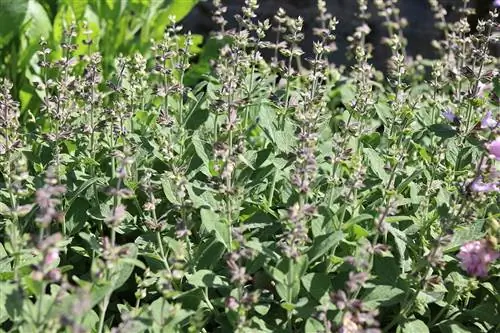
The steppe sage growing in the garden shines with its colorful and fragrant flowers in summer. The cutting measures should be coordinated with the flowering period of the species in order to promote it. Since the herbaceous plant dies before winter and sprouts again next spring, no shape or maintenance cuts are necessary. These are recommended for common sage so that the woody perennial produces aromatic leaves for many years. How to do it right:
- cut back non-woody Salvia species close to the ground in late winter
- cut off wilted flowers and stems during summer pruning
- Cut dead shoots of Sage officinalis close to the ground before they sprout
- then cut he althy parts of the plant up to just above the woody areas
- Harvest leaves regularly from mid-May to encourage shoot formation
Rejuvenate woody sage plants
With steppe or grove sage, there are no signs of aging due to its persistent lifestyle, as this plant sprouts fresh every year. The shoots of the sage become woody from bottom to top over time if no pruning measures are taken. If you leave the perennial to its own devices without using scissors, it will increasingly develop into a subshrub and form leaves with reduced flavor intensity. If the shoots are two-thirds woody, a rejuvenating derivation cut is recommended:
- Look for herbaceous side shoots or swelling buds on woody branches
- select a vegetation point as low as possible
- Cut the plant back to a maximum of five centimeters
- Place the scissors about five to ten millimeters above this point
Note:
After a thorough pruning, the plant sprouts only hesitantly. Give the plant time to recover and avoid harvesting the leaves for the next few weeks.
Harvest while cutting
Culinary sage can be cut back as part of the harvest if the cut was missed in late winter. The cut shoots are suitable for freezing or drying, as the yields are larger with this variant and usually cannot be used up immediately.
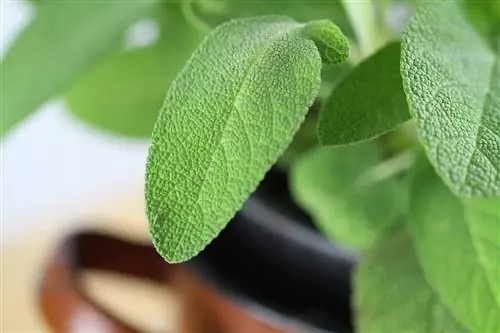
Please note the following tips to achieve the greatest possible harvest success:
- Shower the plant thoroughly before the planned harvest cut
- let it dry overnight
- Cut off herbaceous shoots just above the woody part
Avoid mistakes
Although pruning Salvia species is comparatively easy to do, some errors can occur. You can avoid this by choosing the right time and tailoring the cutting measures to the respective species. If you follow the following instructions, you will avoid common care mistakes:
- Do not cut back into bare areas or the old wood, but stay in the leafy area
- The exception is the rejuvenation cut on Salvia officinalis when there are vegetation points
- Do not cut kitchen sage at sub-zero temperatures to avoid frost damage
- No longer carry out harvest cuts in September so that sub-shrubs can mature
- Do not trim perennial species with scissors after flowering, as dead leaves and shoots serve as winter protection

